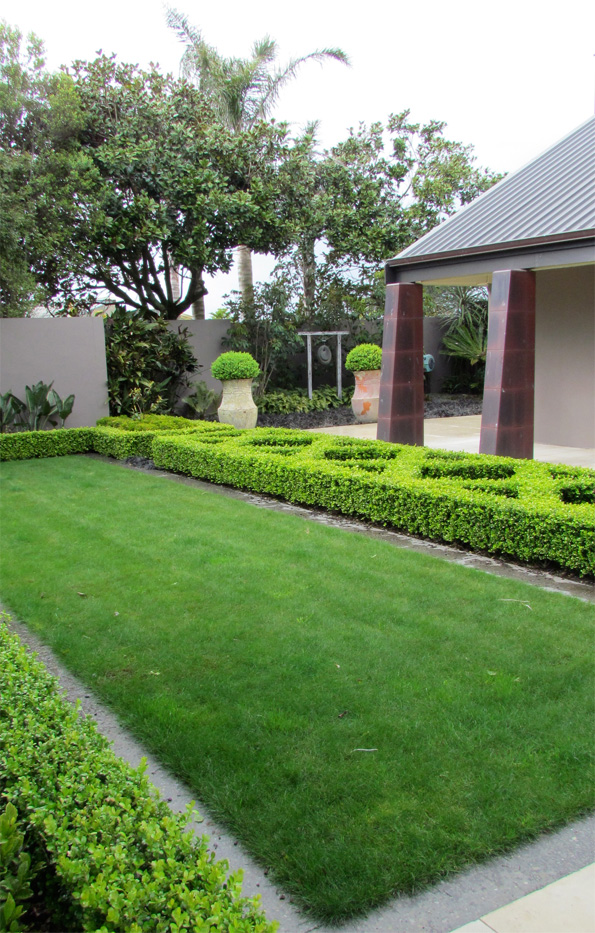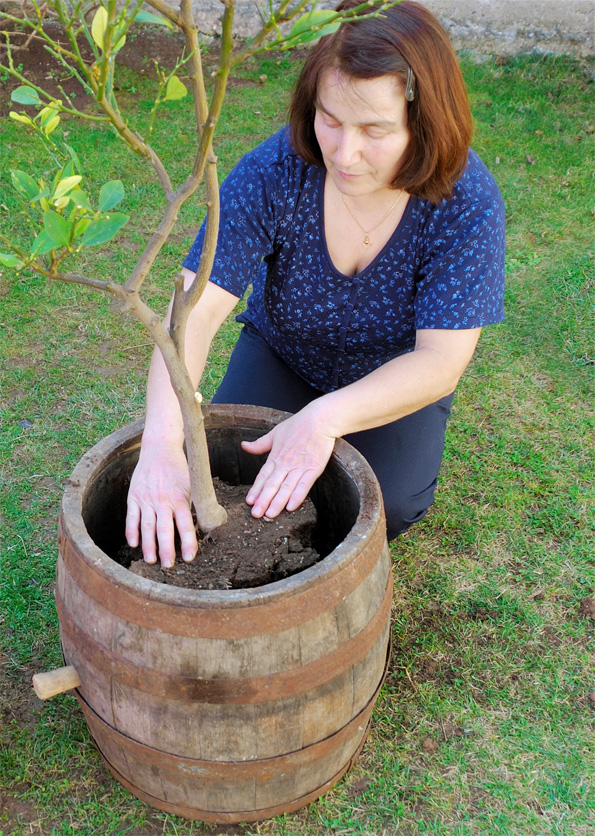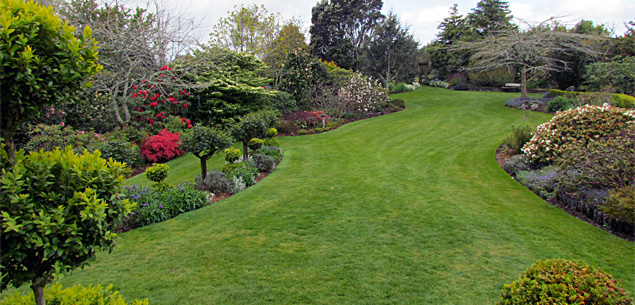Taranaki’s famous mountain has had some competition over the past couple of weeks, with the region’s best gardens grabbing the limelight during the Powerco Taranaki Garden Spectacular. Sadly, things that are described as spectacular are usually not, but 25 years of running this event in the ‘Naki has ensured it is indeed spectacular, with more than 50 gardens on display and plenty of peripheral activities and exhibitions.
We didn’t have time to visit all 50, so the partner and I each picked a few from the programme and headed off. His focus was lawns and flowers, while mine was design elements and hard landscaping. Neither of us was disappointed.
Jim and Sharon King’s 6000m garden at Inglewood did the business for both of us. When we visited, a couple of weeks before the safari opened, Jim and Sharon were enjoying coffee on their deck. Why they weren’t scurrying around weeding, pruning and picking up rubbish had us totally perplexed.

The formal elements of the gardens at Te Kukumata provide a frame for clever planting.
I suppose it’s possible they may have flung themselves into their gardening clothes the instant we left, but I don’t think so. It’s more likely that regular attention keeps this showplace pristine, and a garden which is absolutely bursting with plants looks pretty stunning even when it’s not freshly weeded.
I fell a wee bit in love with Te Kukumata – a big, resort-style garden not far outside of New Plymouth. It took us about 20 minutes to get up the driveway, partly because we were gawping at the views (palms, lake, lawns, sculpture), and partly because our way was impeded by several of the hundreds of doves that inhabit the property.
Thanks to the passion of owners Bryce and Delwyn Barnett and landscape designer Michael Mansvelt this garden is a plant enthusiasts’ paradise, with native and exotic species pushing the boundaries of what will grow in the region. It’s possible to become totally smitten with several of the elements of John Sole and Tony Barnes’ property on the Surf Highway at Oakura.

Beautifully crafted stone walls and steps are edged by formal hedges and big lawns on the Foreman property.
I was, at first, attached to the photo of the Japanese garden in the programme, but I can be fickle and when I got there it was the maples that took my fancy. The partner was all for giving up on Belinda and Paul Foreman’s garden at Lepperton because there is a very long, winding, undulating driveway to the property, with no room to pass should you meet someone coming the other way.
Naturally you expect a stunning view at the end of that and there is one, but the gorgeous country garden takes centre stage with its massive central lawn, stone walls and impressive hedging. Belinda, an interior designer, has managed to successfully merge a family garden, wonderful planting, designer elements and a productive kitchen garden at this country retreat.
After visiting 10 gardens in a weekend, we were getting a bit blasé about stunning vistas, but then the mountain poked its head out of the cloud that had enveloped it. It was sporting an impressive coverage of snow. “What do you think?” I asked the partner. “Spectacular,” he smirked.

Trees in pots
Smaller sections, less room and time, and the ability to follow the sun are all good reasons to grow fruit trees in containers. If you’ve started with citrus – probably the most commonly grown container fruit tree – it’s coming up time for their summer feed.
Despite the fact that they pretend to be laid-back and maintenance free, citrus are actually hungry little souls and right now they’ll be hanging out for citrus fertiliser or a liquid feed. If the leaves are yellow, they need either food or magnesium or both, so get them a tonic to green them up again.
If you’re stinting on food and water, your citrus will punish you by dropping their fruit before it ripens. Other fruit trees you can grow in containers include dwarf almonds, apricots, peaches and nectarines. Give them lots of fertiliser during the growing season and consider root pruning them every two or three years. Then there are cherries, feijoas, figs, kiwifruit, loquat, olives and pomegranates.
Keep in mind that if you’re watering well, nutrients will leach out of the pots over time, so you’ll need to feed the tree regularly.




